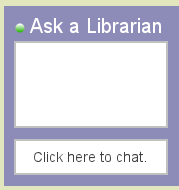Research Tools - Fall 2001
E Subscribe Service Gives Full-Text ERIC Documents
- One of the most useful and popular research tools available to education majors and faculty members is the ERIC Database. A joint product of the Educational Resources Information Center and the U.S. Department of Education, ERIC first became available in 1966 as a print index in two separate sections: the CIJE (Current Index to Journals in Education) and the RIE (Resources in Education). They were later combined to provide electronic indexing to journals and documents via CD-ROM and eventually Internet technology, with citations now numbering over one million. The Weinberg Library provided access to the ERIC database both in house and from remote locations through three different services: Silver Platter ERIC, OCLC’s First Search ERIC and the free service from Syracuse University called ASK ERIC. All three databases allowed the user to search by keyword, author, or more sophisticated advanced searching techniques, such as target audience or type of research report. Approximately one half of all citations in the database are journal articles, found in the print, bound, microfilm or electronic formats. The remaining citations refer the user to a variety of published reports, master’s theses, teaching guides, issue papers, and test and evaluation instruments. These items are called ERIC Documents and had previously only been accessible in full text by physically coming to a library to use the microfiche documents that corresponded to the ED numbers found at the top of each citation. Once the user located the fiche, he or she could read and print any or all of the pages of the documents, which could sometimes exceed 200 pages.
- Now, through a new service called E Subscribe, patrons can access the full–text of the ERIC Documents via the Internet. You may conduct your search in ASK ERIC or ERIC through First Search to obtain citations on your topic. But instead of having to copy d own the ED number and proceed to the microfiche collection, you simply hit the “Obtain Document” link following the abstract. This will automatically bring the Acrobat interface for reading the document onto your screen. Follow the directions to “Open” and you will then be able to view the full-text of the document Use menu options on top of your screen to print or download the text. You may even choose to print only the current page or range of pages if you prefer. Since some of the files are quite lengthy, print page ranges to insure your printer won’t “overflow.”
- Please feel free to call the Reference Desk at x4000 for a demonstration of ESubscribe or if you have any question s regarding the service.
Betsey Moylan

